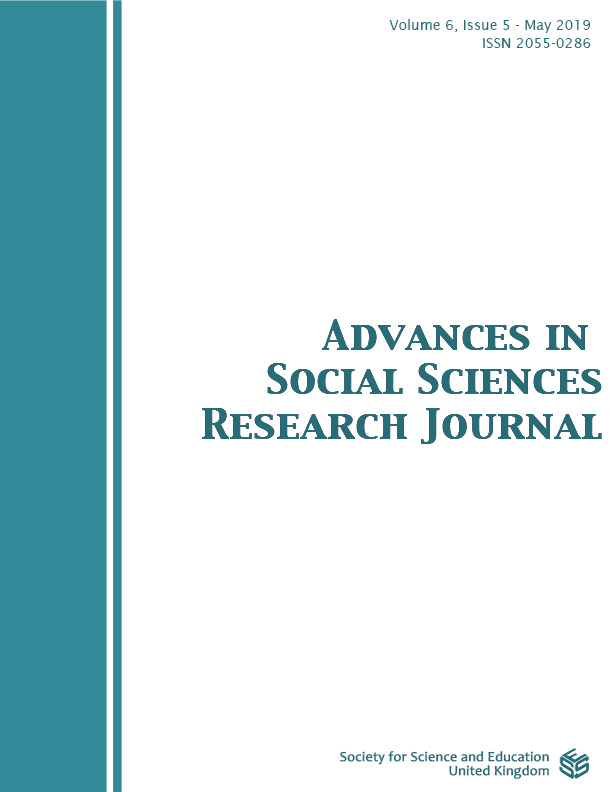STRATEGIES ADOPTED BY THE ADVENTIST CENTRE IN ENHANCING LIVELIHOOD SUSTAINABILITY AMONG BENEFICIARIES IN KIBAGARE SLUM
DOI:
https://doi.org/10.14738/assrj.65.6464Keywords:
Social ScienceAbstract
A livelihood strategy is an organized set of lifestyle choices, goals and values, and activities which Non Governmental Organizations are allowed a flexibility to adopt in order to built and improve livelihoods. Inspite of well documented NGO interventions towards the improvement of livelihoods of urban slum populations, effects of these projects are hardly felt after their exit. It is against this background that this paper addresses the livelihood strategies adopted by Adventist Centre to enhance livelihood sustainability among beneficiaries. The study involved 105 beneficiaries and 10 key informants selected by probability and non probability sampling method. Primary data was collected from the beneficiaries through interviews and questionnaires while secondary data was collected from the AC records such as minutes, policy documents, donor agency correspondencies, operating manual/procedures, grant approval procedures and memorandums of approval. This paper addresses the findings of this research conducted by the author at Kibagare slum, in Nairobi county, Kenya. It discusses the strategies adopted by AC, factors that affect the strategies and the strategies that were most effective and finally recommends on effective ways strategies should be adopted. Recommendations on how to ensure strategies covered all the elements that contribute to sustainable livelihoods that AC needed to develop were recommended.
References
ADAM, A.G. (2013). The influence of financial relations on sustaining rural livelihood in Sudan: Reflecting the significance of social capital in the village Al Dagag, North Kordofam State. Wien:LT.
Ahmed, I. A. (2012). Factors Influencing Sustainable Funding of Nongovernmental Organisations in Kenya: A Case Study of Sisters Maternity Home (SIMAHO) in Garissa. Unpublished Dissertation, Nairobi University.
Aipinge, H.N. (2015). An Analysis of the Sustainability of the United States Government (USG) Aid funded Nongovernmental Organisations (NGOs in the Namibian Health Sector). Unpublished Dissertation, Stellenbosch University.
Amagoh, A. & Kabdiyeva, A. (2012). Management issues for improving NGO Sustainability in Kazakhstan. World Journal of Social Sciences, 2(3), 31-40.
Ameer, R., & Othman, R. (2012). Sustainability practices and corporate financial performance: A study based on the top global corporations.
Bell, S. & Morse, S. (2003) Measuring sustainability: learning by doing. London, Earthscan.
Claessens, S. (2011). Lessons from the Recent Financial Crisis for Reforming National and International Financial Systems: The Road Ahead to a Sustainable Global Economic System.
De Haan, L., Zoomers, A. 2005. Exploring the frontier of livelihoods research. Development and Change 36(1): 27-47.
Ellis, F.(2000). Rural livelihoods and diversity in developing countries.. Oxford: Oxford University Press
Government of Kenya. (2011). Population and housing census: Analytical report on population projections, V11. Nairobi: CBS,MFP.
Journal of Business Ethics, 108(1), 61-79.
KENSUP (2009). Kenya National Slums Upgrading promotional leaflet. Kenya: Ministry of Housing
Lewis, D. (2006). The Management of Non-Governmental Development Organizations: An Introduction. Hoboken: Taylor & Francis Ltd.
Matanga, F.K. (2010). NGOs and the politics of development in Africa Development 53(1): 114-119.
Miller, R.L. and J.D. Brewere, (2003) A-Z of social research. London: SAGE Publication
NGO Board. (2016). Notice to deregister NGOs. http://www.ngobureau.or.ke/
UN (2011) The millennium development goals report 2011. United Nations PUBLICATIONS
USAID. (2009). NGO sustainability index for Sub-Saharan Africa (ist ed.). Pennsylvania Avenue, N.W: U.S. Agency for International Development
Downloads
Published
How to Cite
Issue
Section
License
Authors wishing to include figures, tables, or text passages that have already been published elsewhere are required to obtain permission from the copyright owner(s) for both the print and online format and to include evidence that such permission has been granted when submitting their papers. Any material received without such evidence will be assumed to originate from the authors.






